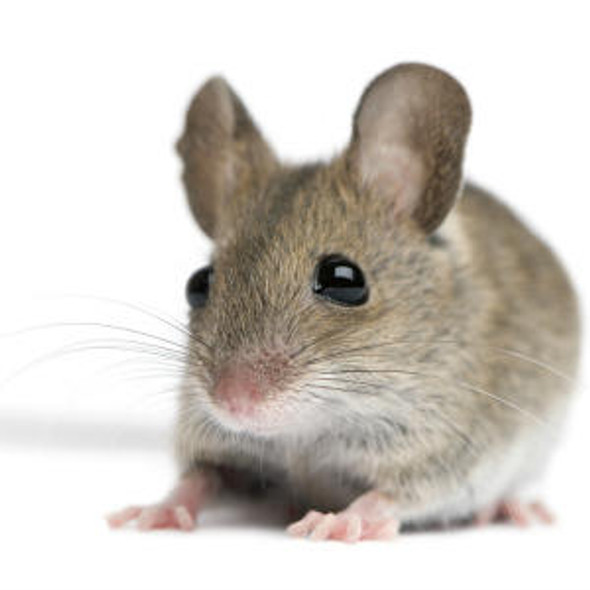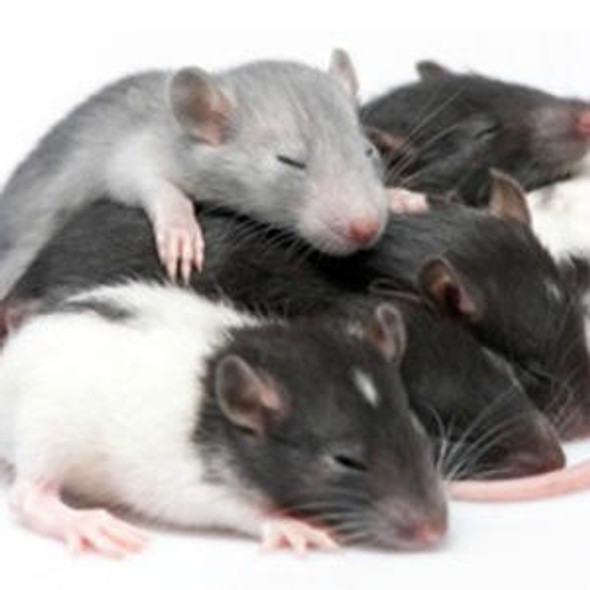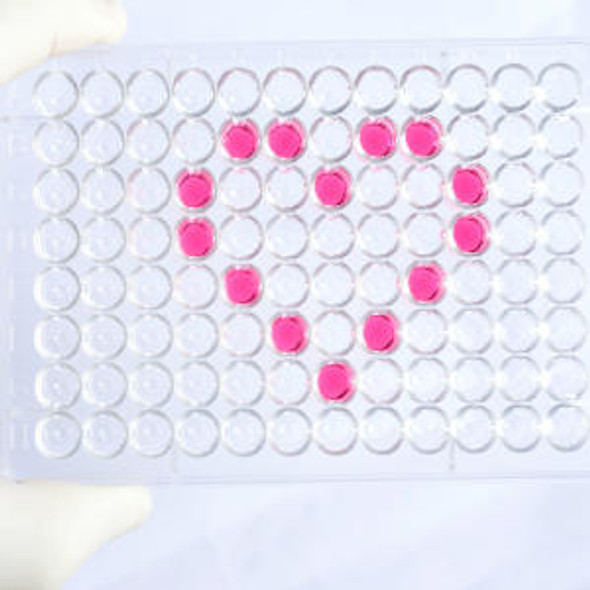Human Cell Biology ELISA Kits 1
Human FGF10(Fibroblast Growth Factor 10)ELISA Kit (HUES03452)
- SKU:
- HUES03452
- Product Type:
- ELISA Kit
- Size:
- 96 Assays
- Uniprot:
- O15520
- Sensitivity:
- 4.69pg/mL
- Range:
- 7.81-500pg/mL
- ELISA Type:
- Sandwich
- Reactivity:
- Human
- Sample Type:
- Serum, plasma and other biological fluids
- Research Area:
- Cell Biology
Description
| Assay type: | Sandwich |
| Format: | 96T |
| Assay time: | 4.5h |
| Reactivity: | Human |
| Detection Method: | Colormetric |
| Detection Range: | 7.81-500 pg/mL |
| Sensitivity: | 4.69 pg/mL |
| Sample Volume Required Per Well: | 100µL |
| Sample Type: | Serum, plasma and other biological fluids |
| Specificity: | This kit recognizes Human FGF10 in samples. No significant cross-reactivity or interference between Human FGF10 and analogues was observed. |
This ELISA kit uses Sandwich-ELISA as the method. The micro ELISA plate provided in this kit has been pre-coated with an antibody specific to Human FGF10. Standards or samples are added to the appropriate micro ELISA plate wells and combined with the specific antibody. Then a biotinylated detection antibody specific for Human FGF10 and Avidin-Horseradish Peroxidase (HRP) conjugate are added to each micro plate well successively and incubated. Free components are washed away. The substrate solution is added to each well. Only those wells that contain Human FGF10, biotinylated detection antibody and Avidin-HRP conjugate will appear blue in color. The enzyme-substrate reaction is terminated by adding Stop Solution and the color turns yellow. The optical density (OD) is measured spectrophotometrically at a wavelength of 450 nm ± 2 nm. The OD value is proportional to the concentration of Human FGF10. The concentration of Human FGF10 in samples can be calculated by comparing the OD of the samples to the standard curve.
| UniProt Protein Function: | FGF10: Plays an important role in the regulation of embryonic development, cell proliferation and cell differentiation. Required for normal branching morphogenesis. May play a role in wound healing. Interacts with FGFR1 and FGFR2. Interacts with FGFBP1. Belongs to the heparin-binding growth factors family. |
| UniProt Protein Details: | Protein type:Secreted; Cytokine; Cell development/differentiation; Secreted, signal peptide; Motility/polarity/chemotaxis Chromosomal Location of Human Ortholog: 5p13-p12 Cellular Component: extracellular matrix; extracellular space; cell surface; plasma membrane; extracellular region; nucleus Molecular Function:heparin binding; protein binding; growth factor activity; type 2 fibroblast growth factor receptor binding; chemoattractant activity; fibroblast growth factor receptor binding Biological Process: nerve growth factor receptor signaling pathway; salivary gland development; activation of MAPK activity; somatic stem cell maintenance; urothelial cell proliferation; positive regulation of epithelial cell proliferation involved in wound healing; positive regulation of transcription, DNA-dependent; muscle cell fate commitment; response to lipopolysaccharide; regulation of saliva secretion; embryonic pattern specification; G1/S-specific positive regulation of cyclin-dependent protein kinase activity; positive regulation of fibroblast proliferation; epithelial cell proliferation; positive chemotaxis; embryonic digestive tract morphogenesis; induction of an organ; mesonephros development; embryonic genitalia morphogenesis; spleen development; positive regulation of keratinocyte migration; fibroblast growth factor receptor signaling pathway; positive regulation of DNA repair; positive regulation of urothelial cell proliferation; positive regulation of peptidyl-tyrosine phosphorylation; branching morphogenesis of a tube; positive regulation of transcription from RNA polymerase II promoter; smooth muscle cell differentiation; determination of left/right symmetry; metanephros development; positive regulation of epithelial cell proliferation; wound healing; radial glial cell differentiation; positive regulation of mitotic cell cycle; positive regulation of vascular endothelial growth factor receptor signaling pathway; response to estradiol stimulus; induction of positive chemotaxis; negative regulation of cell proliferation; establishment of mitotic spindle orientation; positive regulation of MAPKKK cascade; tissue regeneration; positive regulation of lymphocyte proliferation; pancreas development; male genitalia morphogenesis; thyroid gland development; angiogenesis; lacrimal gland development; otic vesicle formation; female genitalia morphogenesis; positive regulation of Notch signaling pathway; epidermal growth factor receptor signaling pathway; hair follicle morphogenesis; phosphoinositide-mediated signaling; thymus development; keratinocyte proliferation; regulation of activin receptor signaling pathway; embryonic camera-type eye development; odontogenesis of dentine-containing teeth; limb bud formation; pituitary gland development; positive regulation of ATPase activity; actin cytoskeleton reorganization; white fat cell differentiation; insulin receptor signaling pathway; innate immune response; blood vessel remodeling; positive regulation of Ras protein signal transduction; positive regulation of DNA replication; regulation of smoothened signaling pathway Disease: Lacrimoauriculodentodigital Syndrome; Aplasia Of Lacrimal And Salivary Glands |
| NCBI Summary: | The protein encoded by this gene is a member of the fibroblast growth factor (FGF) family. FGF family members possess broad mitogenic and cell survival activities, and are involved in a variety of biological processes, including embryonic development, cell growth, morphogenesis, tissue repair, tumor growth and invasion. This protein exhibits mitogenic activity for keratinizing epidermal cells, but essentially no activity for fibroblasts, which is similar to the biological activity of FGF7. Studies of the mouse homolog of suggested that this gene is required for embryonic epidermal morphogenesis including brain development, lung morphogenesis, and initiation of lim bud formation. This gene is also implicated to be a primary factor in the process of wound healing. [provided by RefSeq, Jul 2008] |
| UniProt Code: | O15520 |
| NCBI GenInfo Identifier: | 6015141 |
| NCBI Gene ID: | 2255 |
| NCBI Accession: | O15520. 1 |
| UniProt Secondary Accession: | O15520,Q6FHR3, Q6FHT6, Q96P59, C7FDY0, |
| UniProt Related Accession: | O15520 |
| Molecular Weight: | 208 |
| NCBI Full Name: | Fibroblast growth factor 10 |
| NCBI Synonym Full Names: | fibroblast growth factor 10 |
| NCBI Official Symbol: | FGF10 |
| NCBI Protein Information: | fibroblast growth factor 10; FGF-10; keratinocyte growth factor 2; produced by fibroblasts of urinary bladder lamina propria |
| UniProt Protein Name: | Fibroblast growth factor 10 |
| UniProt Synonym Protein Names: | Keratinocyte growth factor 2 |
| Protein Family: | Fibroblast growth factor |
| UniProt Gene Name: | FGF10 |
| UniProt Entry Name: | FGF10_HUMAN |
As the OD values of the standard curve may vary according to the conditions of the actual assay performance (e. g. operator, pipetting technique, washing technique or temperature effects), the operator should establish a standard curve for each test. Typical standard curve and data is provided below for reference only.
| Concentration (pg/mL) | O.D | Average | Corrected |
| 500 | 2.327 2.341 | 2.334 | 2.275 |
| 250 | 1.691 1.695 | 1.693 | 1.634 |
| 125 | 0.91 0.902 | 0.906 | 0.847 |
| 62.5 | 0.511 0.523 | 0.517 | 0.458 |
| 31.25 | 0.243 0.233 | 0.238 | 0.179 |
| 15.63 | 0.166 0.158 | 0.162 | 0.103 |
| 7.81 | 0.11 0.114 | 0.112 | 0.053 |
| 0 | 0.054 0.064 | 0.059 | -- |
Precision
Intra-assay Precision (Precision within an assay): 3 samples with low, mid range and high level Human FGF10 were tested 20 times on one plate, respectively.
Inter-assay Precision (Precision between assays): 3 samples with low, mid range and high level Human FGF10 were tested on 3 different plates, 20 replicates in each plate.
| Intra-assay Precision | Inter-assay Precision | |||||
| Sample | 1 | 2 | 3 | 1 | 2 | 3 |
| n | 20 | 20 | 20 | 20 | 20 | 20 |
| Mean (pg/mL) | 23.94 | 48.08 | 178.18 | 25.57 | 49.47 | 184.38 |
| Standard deviation | 1.34 | 2.10 | 8.91 | 1.69 | 2.94 | 9.40 |
| C V (%) | 5.60 | 4.37 | 5.00 | 6.61 | 5.94 | 5.10 |
Recovery
The recovery of Human FGF10 spiked at three different levels in samples throughout the range of the assay was evaluated in various matrices.
| Sample Type | Range (%) | Average Recovery (%) |
| Serum (n=5) | 89-105 | 97 |
| EDTA plasma (n=5) | 94-109 | 100 |
| Cell culture media (n=5) | 91-104 | 98 |
Linearity
Samples were spiked with high concentrations of Human FGF10 and diluted with Reference Standard & Sample Diluent to produce samples with values within the range of the assay.
| Serum (n=5) | EDTA plasma (n=5) | Cell culture media (n=5) | ||
| 1:2 | Range (%) | 91-102 | 91-104 | 91-103 |
| Average (%) | 97 | 98 | 98 | |
| 1:4 | Range (%) | 89-102 | 86-101 | 87-98 |
| Average (%) | 95 | 92 | 93 | |
| 1:8 | Range (%) | 91-107 | 86-98 | 84-98 |
| Average (%) | 98 | 91 | 91 | |
| 1:16 | Range (%) | 89-103 | 82-93 | 82-95 |
| Average (%) | 95 | 89 | 89 |
An unopened kit can be stored at 4°C for 1 month. If the kit is not used within 1 month, store the items separately according to the following conditions once the kit is received.
| Item | Specifications | Storage |
| Micro ELISA Plate(Dismountable) | 8 wells ×12 strips | -20°C, 6 months |
| Reference Standard | 2 vials | |
| Concentrated Biotinylated Detection Ab (100×) | 1 vial, 120 µL | |
| Concentrated HRP Conjugate (100×) | 1 vial, 120 µL | -20°C(shading light), 6 months |
| Reference Standard & Sample Diluent | 1 vial, 20 mL | 4°C, 6 months |
| Biotinylated Detection Ab Diluent | 1 vial, 14 mL | |
| HRP Conjugate Diluent | 1 vial, 14 mL | |
| Concentrated Wash Buffer (25×) | 1 vial, 30 mL | |
| Substrate Reagent | 1 vial, 10 mL | 4°C(shading light) |
| Stop Solution | 1 vial, 10 mL | 4°C |
| Plate Sealer | 5 pieces | |
| Product Description | 1 copy | |
| Certificate of Analysis | 1 copy |
- Set standard, test sample and control (zero) wells on the pre-coated plate and record theirpositions. It is recommended to measure each standard and sample in duplicate. Note: addall solutions to the bottom of the plate wells while avoiding contact with the well walls. Ensuresolutions do not foam when adding to the wells.
- Aliquot 100µl of standard solutions into the standard wells.
- Add 100µl of Sample / Standard dilution buffer into the control (zero) well.
- Add 100µl of properly diluted sample (serum, plasma, tissue homogenates and otherbiological fluids) into test sample wells.
- Cover the plate with the sealer provided in the kit and incubate for 90 min at 37°C.
- Aspirate the liquid from each well, do not wash. Immediately add 100µL of BiotinylatedDetection Ab working solution to each well. Cover the plate with a plate seal and gently mix. Incubate for 1 hour at 37°C.
- Aspirate or decant the solution from the plate and add 350µL of wash buffer to each welland incubate for 1-2 minutes at room temperature. Aspirate the solution from each well andclap the plate on absorbent filter paper to dry. Repeat this process 3 times. Note: a microplatewasher can be used in this step and other wash steps.
- Add 100µL of HRP Conjugate working solution to each well. Cover with a plate seal andincubate for 30 min at 37°C.
- Aspirate or decant the solution from each well. Repeat the wash process for five times asconducted in step 7.
- Add 90µL of Substrate Reagent to each well. Cover with a new plate seal and incubate forapproximately 15 min at 37°C. Protect the plate from light. Note: the reaction time can beshortened or extended according to the actual color change, but not by more than 30min.
- Add 50 µL of Stop Solution to each well. Note: Adding the stop solution should be done inthe same order as the substrate solution.
- Determine the optical density (OD value) of each well immediately with a microplate readerset at 450 nm.






